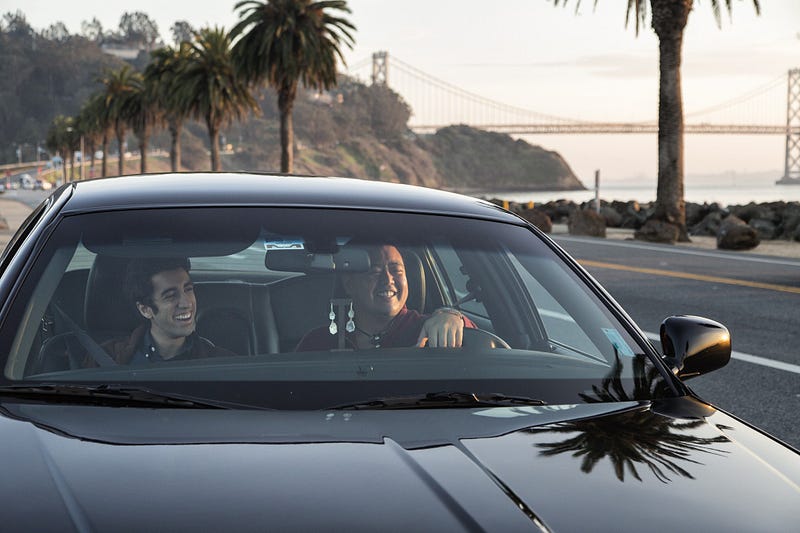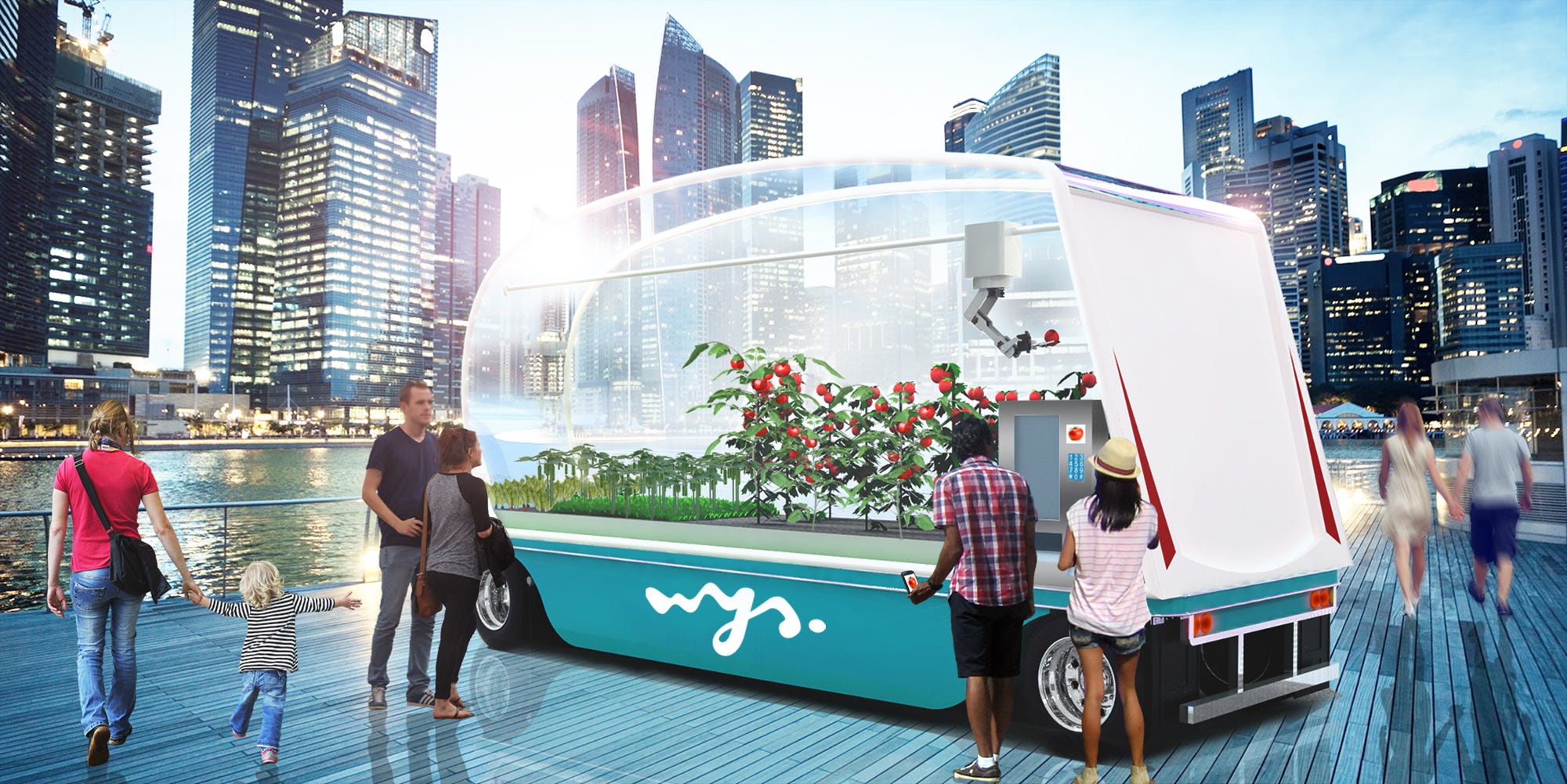Imagine a driverless future
(Gepubliceerd op Medium op 26/4/2015. Geherpubliceerd hier ter back-up.)
By now it seems inevitable we will enter a future of selfdriving cars. Traditional car makers like Audi and BMW are hard at work catching up with tech players like Google and Tesla; and who knows what Uber has in store.
It is a fun intellectual exercise to imagine a future where all cars are selfdriving.
Shifting attention
Not having to steer the car yourself would free up a lot of time to do some screen work. Our cars could change into a small personal train wagon:

But why stop at screens? I know a lot of people for whom the daily commute is a constant struggle with time — they keep shaving precious sleep minutes from it.

If the car bringing us to work allows us to drive hands- and attention free, why would we not take the time to wake up during this commute?
I can see a driverless car that serves you breakfast. Maybe even imagine a car with a built-in sink for your morning dental hygiene and with extensive mirrors and make-up tools.
This is a radical shift of attention in a car. If I was running an outdoor advertising company, I would be paying close attention to this, and maybe now be hedging my bets by investing in an in-car advertising platform.
Maybe even radio as an advertising medium will be affected — if we can look at screens in our cars, we are no longer limited to listen to radio while driving.
Who pays the bill?
When all cars are self driving, it will make more sense to stop owning a car yourself and just use Uber-like systems for each ride and pay-as-you-go. The first signs of a new generation that is not interested in buying its own car are already here.
But maybe we will not even pay for rides.
SMAK, an art museum in Ghent, in cooperation with a car brand, is experimenting with small cars that drive through town and are installed as small movable museums. Why would driverless cars not be owned by a museum, and if you buy an entrance ticket to the museum you get a complimentary ride to the museum — the ride is actually part of the experience.
Right now new entrepreneurs are using a Uber taxi driving job as a way to sell other things. As you can read in this Forbes article:
I’m not in Gavin’s car. I’m in his mobile showroom. He’s an Uberpreneur.
There are lots of ways to think of a ride in a selfdriving car as an extension of existing other businesses.

Dating sites are big business. But the end goal of online dating is always to physically meet up. What if there was a special ‘dating’ fleet of selfdriving cars — where you always ride with a new co-rider that is specifically matched to your profile?
Retailers in big cities routinely offer vouchers for parking your car in a paying parking lot in the vicinity of their store. What if they offered free rides from your home to their retail store — just to make sure you shop there?
Maybe companies like Walmart, Target and Tesco should start investing in a fleet of driverless cars that pick up customers and bring them to their outlets.
The horseless cart syndrome
The big danger of thinking about the future: we tend to fall prey to the horseless cart syndrome — imagening the future will be an extrapolation of the present.

Driverless cars will not mean everything will stay the same, except that we won’t be driving our cars ourselves. Radical new technology has a tendency to change human behaviour.
First we change technology, but then technology changes us.
Driverless cars will be supported by powerfull algorithms. Not just to determine how and where to drive — but also to decide where to drive to. It is easy to imagine how we use a selfdriving car as a robot taxi: we call one, say the address we want to be, it brings us there.
But think about what happened when we switched from landline phones to mobile phones. We stopped thinking in ‘call a certain place’ and shifted to ‘call a certain person, whatever the place’. We even stopped remembering the phone number — it changed into a persons name in our mobile address book.
Why would we give an address as a command to a self driving car? Why wouldn’t we ask it to bring us to a more general intention? “Bring me to a medium-priced restaurant.” “I need to find a new suit for the wedding party of my best friend next week.” “Where is a good place to meet new clients for my business?”
Selfdriving cars could be the search engine for the physical world.
If you look at it that way, it is totally understandable why Google is investing so heavily in their selfdriving cars.
Places are coming to us
There are two big reasons why we hop into a car right now: 1. to get our bodies to a different place we have to be; and 2. to pick up something we need.
This second reason will shift dramatically. Why would we ourselves go someplace, just to pick something up and bring it back to our homes, the place we already are? Why would we go to a retail store or shopping mall, just to carry groceries back to our home?
Instead of us going to places, places will come to us.
The first datapoints for this future already exist. Of course Uber is a prime example — instead of going to a taxi stand, you call the taxi to the place you are. Instant gratification guaranteed.
Look at what Postmates or Take Eat Easy are doing — they are bringing the restaurant to you. And why would you go to a post office if Shyp can come to you?
Driverless cars will not be limited by the form factor cars have right now — optimised for people transport. They can and will change into the place they are bringing to you.

When I’m cooking, and I need tomatoes, the farm — in the form of a solar powered, selfdriving farm-truck — will come to me and bring me freshly harvested tomatoes. On demand, or even with anticipatory shipping…
In a sense this is going back to some older days — when there was a milkman driving around bringing you milk, or an ice cream trolley driving through your neighbourhood in the summer.
Only now they will be ubiquitous and driven by robots and algorithms.
Rethink retail
Retail stores will have to fundamentally alter their way of thinking. It will not do to just be a distribution point for physical goods. Even the biggest advantage of a shop — the feeling of instant gratification — will disappear.
Added value will have to come from something else.
tags: future, trends, driverless
